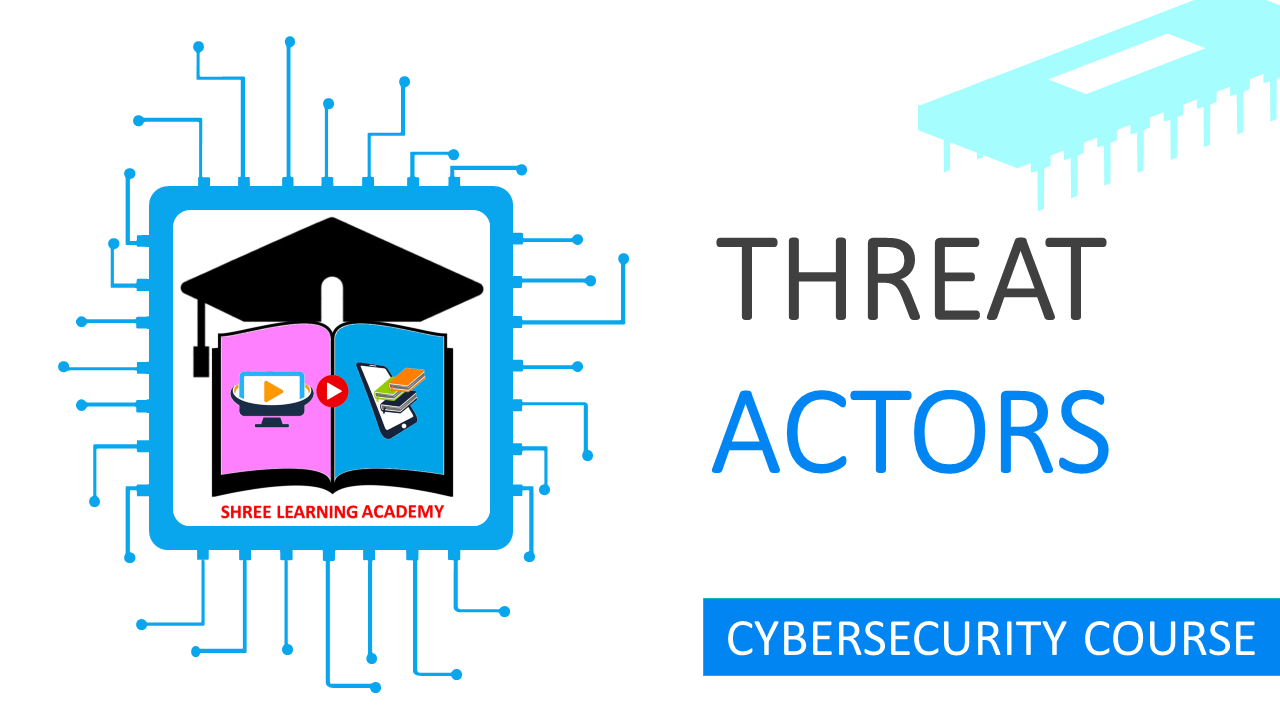SHREE LEARNING ACADEMY
Threat Actors and their types
Understanding Cybersecurity Threat Landscape: Key Players and Concepts
Cybersecurity is like a big game of cops and robbers in the digital world. Just like in the real world, there are good guys and bad guys in cyberspace. Let's break down some terms and types of players in this realm.
Threat Actor: The Culprit Behind Security Breaches
Imagine your computer or network as your house. A threat actor is like a burglar who wants to break into your house, but in this case, they aim to breach your computer system. They're the people or groups responsible for causing security problems, like stealing data or causing disruptions.
Types of Actors: The Good, The Bad, and The Complicated
Black Hat Hackers: The Villains
Black Hat hackers are like burglars or thieves who break into systems to steal information or cause harm. They do this for personal gain or malicious reasons.
**Example**: Imagine a hacker stealing credit card details from an online store's database. That's a Black Hat hacker at work.
White Hat Hackers: The Heroes
These are the good guys—the ethical hackers. They're like the security guards who check if your house is easy to break into so they can fix it before a burglar comes along.
**Example**: Big companies often pay White Hat hackers to test their security systems.
Gray Hat Hackers: The Robin Hoods
Gray Hat hackers are tricky to categorize. They might break the rules, but often with good intentions. Think of them as vigilantes.
**Example**: They might hack into a system to expose a security flaw, making the internet safer, but without permission from the owner.
Script Kiddies: The Amateur Attackers
Script Kiddies are like kids playing with matches; they might not fully understand what they're doing, but they can still cause a fire. They use pre-made hacking tools and are generally less skilled but can be dangerous.
**Example**: A teenager using a tool to overload a school website, making it temporarily unavailable.
Hacktivist: The Activists
Hacktivists are like protesters but in the digital world. They use their hacking skills to stand up for a cause, although their methods are often illegal.
**Example**: Hacking a government website to display a message about climate change.
Organized Crime: The Profit-Seekers
These are groups of skilled individuals who engage in cybercrime as a business.
**Example**: Think of a gang focusing on large-scale financial fraud online.
Nation States/APT: The Government Spies
Advanced Persistent Threats (APTs) often involve nation-states. Imagine a country's secret agents, but instead of working in the real world, they're sneaking around the internet.
**Example**: Country A hacking into the infrastructure of Country B to steal sensitive information.
Insiders: The Trojan Horses
Sometimes the threat comes from inside the organization. Insiders have access to systems and can cause harm knowingly or unknowingly.
**Example**: An unhappy employee purposely deleting crucial company files.
Competitors: The Rivals
These are usually businesses that engage in corporate spying to get an edge.
**Example**: Company A hacks into Company B's database to steal their future product plans.
Attributes of Actors: The Profile
When understanding a threat actor, think about if they're internal or external to your "house." Consider their skill level (sophistication), the resources they have, and what they want to do (intent).
**Example**: A nation-state would be an external actor with high sophistication, numerous resources, and various intentions, like espionage or sabotage.
Open-Source Intelligence: The Public Clues
Open-Source Intelligence (OSINT) is like being a detective but using only publicly available information to gather clues.
**Example**: Scouring social media to collect information that could be useful in a cybersecurity investigation.
Summary
Understanding the landscape of cybersecurity means knowing who the players are and what their motives might be. Just like in the real world, there are various characters with different intentions and capabilities. Being aware of these can help you prepare better for the challenges in maintaining a secure digital environment.
Test Yourself
Take Free Quiz
Watch our Video Tutorial

